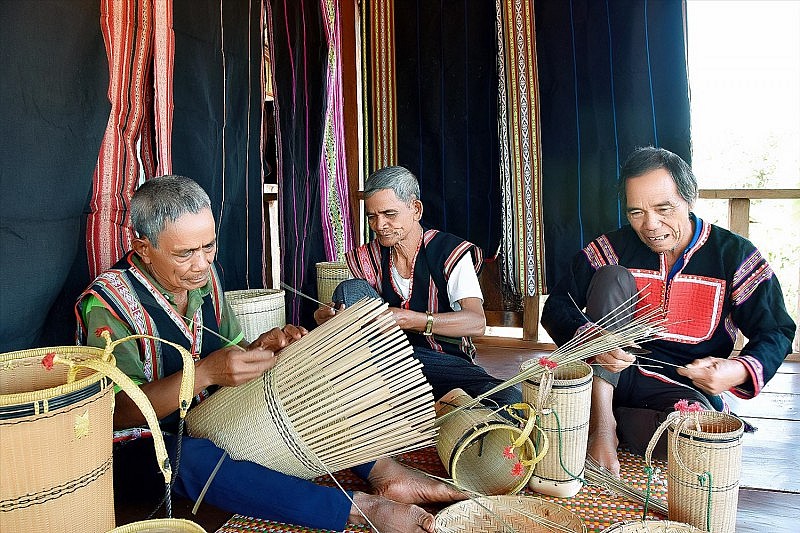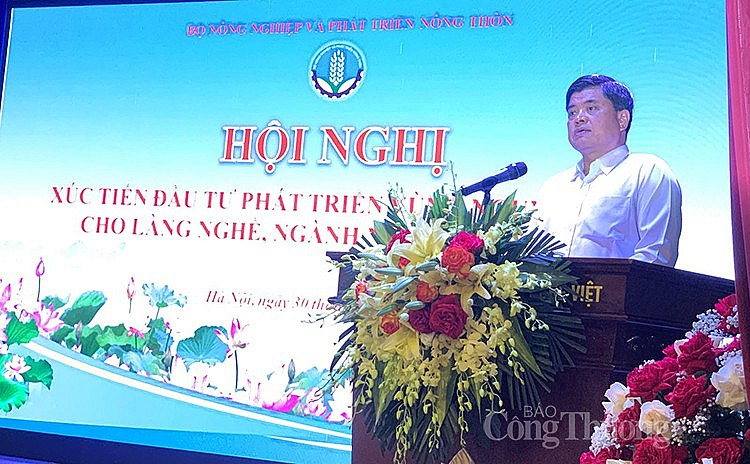 News
News
| Hanoi: Trade promotion of handicraft products, OCOP products in 2023Seminar: Branding for handicraft products in mountainous areasBranding handicraft products: Enterprises need to clearly identify strengths and weaknesses |
Sharing at the Conference on investment promotion and development of raw material areas for craft villages and rural industries organized by the Ministry of Agriculture and Rural Development on June 30, in Hanoi, Mr. Le Ba Ngoc - Secretary General Vietnam Handicraft Exporters Association (Vietcraft) said that Vietnam's handicraft products are present in 163 countries and territories.
 |
| Knitting artisans often gather in a group to divide the work, the weavers, the weavers |
The export turnover of Vietnam's handicrafts in the period 2015 - 2022 increased by an average of 9.5%/year, from 1.62 billion USD (2015) to nearly 3 billion USD (2021) and decreased significantly by about 2 billion USD. $ ,4 billion (in 2022) due to the impact of the epidemic, geopolitical developments have reduced the export of Vietnam's handicrafts... The trend of declining exports continued for up to 6 months early 2023.
In order for the handicraft industry to develop sustainably and achieve an export turnover of 6 billion USD by 2030 (according to Decision 801/QD-TTg dated 7/7/2022 of the Prime Minister), in addition to the development of product development, production standard conformity, trade promotion, etc., the sustainable development of raw material areas is the first decisive issue.
However, the development of raw material areas for handicraft groups recently has many shortcomings, challenges and potential risks to achieve the goals set by the Government.
In this regard, according to Mr. Le Duc Thinh - Director of the Department of Economic Cooperation and Rural Development (Ministry of Agriculture and Rural Development), although the raw materials of craft villages and rural industries are mainly decisive factor for the sustainable development of the industry, however, there are currently too many obstacles and inadequacies in creating concentrated material areas and are heavily dependent on imported materials from abroad. . This greatly affects the competitiveness and quality of products.
“Our country's annual demand for rattan is about 80,000 tons with an output of about 3.5 tons/ha, it needs an area of 23,000 hectares. The source of rattan and rattan raw materials is mainly natural exploitation and becomes very scarce due to over-exploitation and lack of management , "said Mr. Le Duc Thinh.
In addition, the lack of concentrated and large-scale planting areas has led to a lack of stability in the supply of raw materials. On the other hand, countries that have a lot of rattan and rattan materials in the world such as Indonesia, Laos, etc. also ban the export of raw materials, so Vietnamese enterprises are seriously lacking in raw materials.
Currently, for knitting materials, the area for production is still very much lacking and often fluctuates according to the price of raw materials; Preliminary processing, processing and preservation technology is still outdated, leading to low quality of finished products...
Director General Le Duc Thinh stated that, currently, localities do not have long-term development plans or programs to develop concentrated and large-scale raw material areas to serve enterprises, craft villages and rural industries. business.
Notably, there are not many linkages in production in raw material areas following the trend of forming cooperatives, cooperative groups and linking people with businesses to purchase and consume products. Most of the area, the number of products, and the raw materials have not been granted a certificate of sustainability or a growing area code to meet the criteria for export.
Emphasizing the role of raw material areas for production and export, Mr. Tran Thanh Nam - Deputy Minister of Agriculture and Rural Development said that it is necessary to combine small raw material areas in craft villages, in parallel with regional planning. large raw material. To develop the raw material area, the only way is to link cooperatives, businesses, with the view of the Ministry, must build a chain of links.
 |
| Mr. Tran Thanh Nam - Deputy Minister of Agriculture and Rural Development spoke at the Conference |
On the part of the localities, it is necessary to review the local land planning to build concentrated and large-scale production material areas associated with preliminary processing and processing factories such as: mountainous areas growing bamboo, bamboo, song, clouds...; In coastal areas, sedges, grass for shaping statues...; in the midland area planting hemp, mulberry, banana... Reorganize production in raw material areas according to the trend of association between people to form cooperatives, cooperative groups and link between people and people enterprise.
At the same time, it is necessary to have policies to attract and support businesses, cooperatives and individuals to invest in building concentrated material areas that are certified for sustainability ... retaining workers in the countryside, not flooding into urban areas and contributing to the development of a better life for people, as well as socio-economic development in each locality… Want to develop craft villages and If you want to export, you must take the initiative in the raw material area," emphasized Deputy Minister Tran Thanh Nam.
In order to meet the requirements of the market as well as meet the goal of achieving export turnover of 6 billion USD by 2030 set by the Government, Mr. Le Ba Ngoc also said that priority should be given to the development of the highland areas. data based on the competitive advantage of each region, domain and with traceability. Improve the quality of raw materials. Diversify forms of owners of raw material areas, creating conditions for production and business establishments, especially export businesses in craft villages to participate in developing raw material zones.
In-depth investment in science and technology, deep investment in processing technology to standardize the source of processed materials and improve raw material processing productivity, increase the recovery rate, and orient the development of regions. origin materials, craft villages with clean and environmentally friendly production technologies.
In addition, prioritizing design development as a breakthrough to improve the value of raw materials and enhance the value of Vietnam's craft village products. At the same time, it is necessary to train and develop human resources in both quantity and quality for the sustainable development of craft villages.